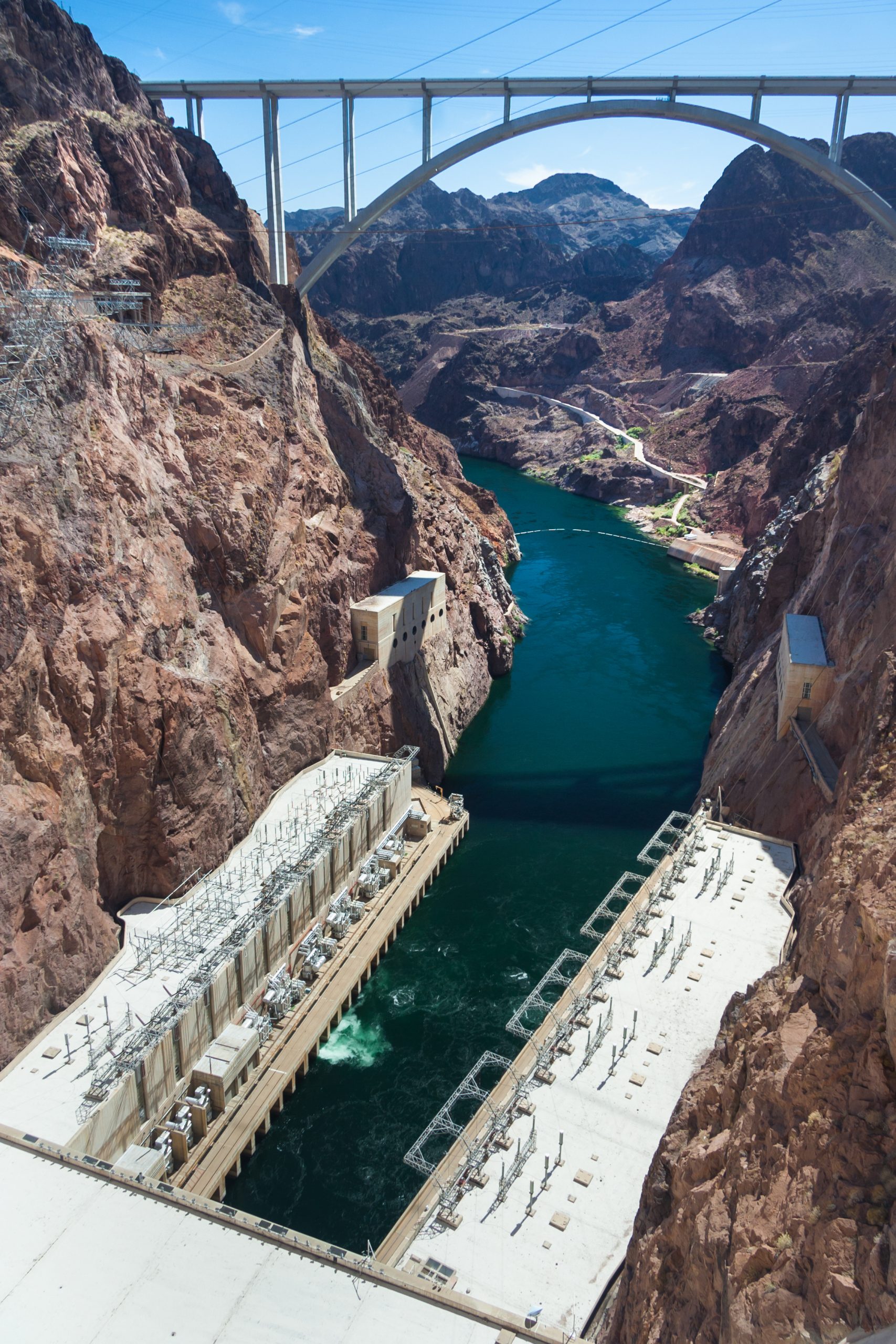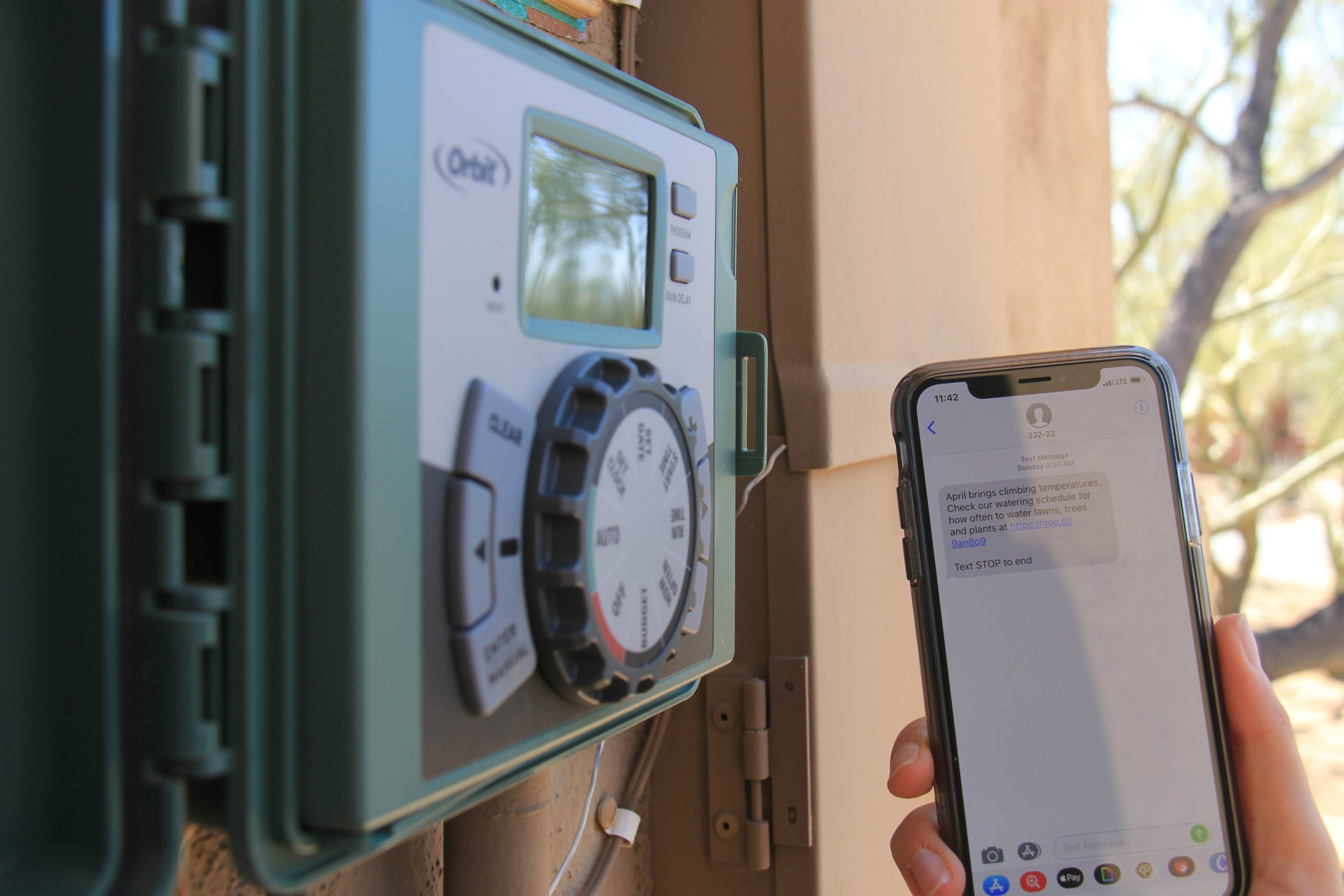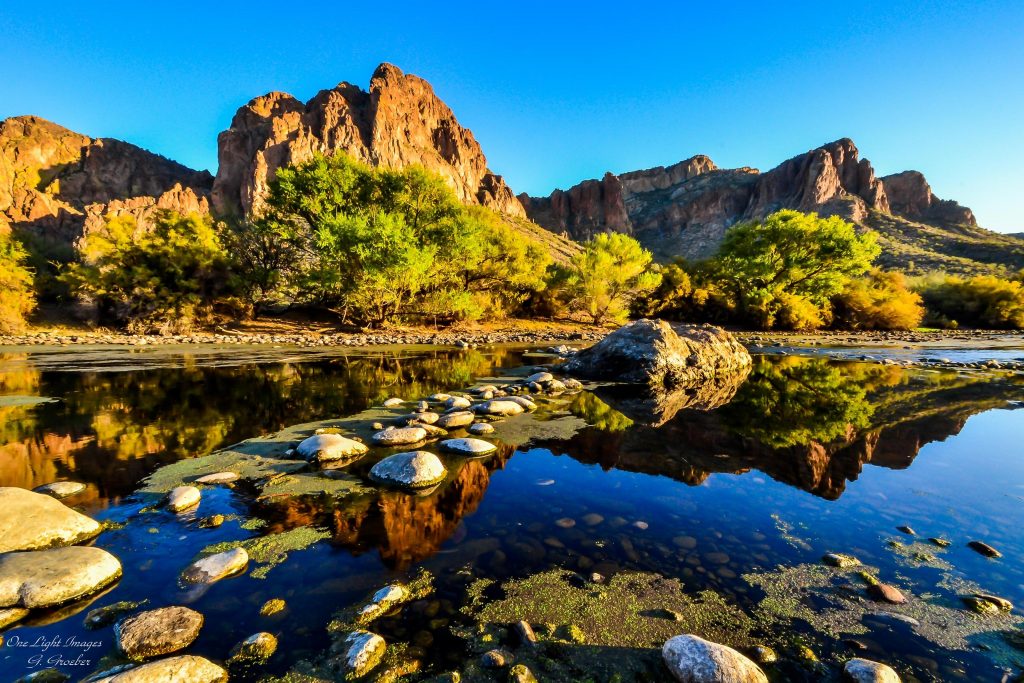Q: Why aren’t there water restrictions in place? We’re in a desert, we’re in a drought, and we are facing shortages of Colorado River water. Shouldn’t we be using less?
Actually, we are using less. That fact, along with robust water portfolios and shortage preparation, is why the Phoenix area cities do not need to mandate additional water use reductions at this time. The ten AMWUA cities have been achieving average per capita reductions of 2 percent or more annually. Since 2000, the City of Phoenix grew by more than a quarter million people, yet residential water use has actually declined by 12.5 percent. Valley residents have embraced conservation. We are becoming more efficient in our water use, and that trend will continue.
Most people aren’t aware that Arizona has mandated conservation in the most populous areas of the state for nearly 40 years. Water providers, industrial water users, and agriculture must meter all connections, report their water use annually, and achieve increasingly rigorous conservation requirements.
To meet those requirements, and just as importantly, to meet their own long-term water management goals, the AMWUA cities collectively implement more than 300 best management practices. For more than 35 years, the AMWUA cities and partners have worked together to build shared conservation resources and programs. Each city has dedicated conservation staff, as well as rebates, resources, and programs tailored specifically to assist their residents and businesses.
Conservation and efficiency are embedded in our cities’ long-term management strategies. It enables cities to stretch their supplies, build in resiliency, and reduce costs to customers. Arizonans have embraced conservation and efficiency as a way of life—day in and day out. It isn’t something we turn off, regardless of how flush with supply we may be.
However, it is far more than conservation that has enabled us to weather 22 years of drought and face imminent Colorado River shortages without needing to impose restrictions.

- We are #BuiltForDrought. Drought is an extended period of less than average precipitation. It does not necessarily mean a shorta<water, reclaimed water, unused water stored underground in previous years, and a certain amount of groundwater. The diversity of their portfolios enables the AMWUA cities to offset reductions in one or more supplies. Shortage of a given supply doesn’t mean there is insufficient water to meet demand.
- We recycle. The AMWUA cities reclaim all of their wastewater, putting nearly 100 percent to beneficial uses — including energy production, irrigation, and underground storage for use in times of shortage — and offsetting the demand for surface supplies.
- We are obsessive planners. In addition to meeting the state’s 100-year water supply requirements, AMWUA members invest in ongoing long-range planning, including research to understand future water demand trends, growth patterns, supply availability, impacts of drought and climate change, and potential regulatory impacts.
- We store for times of shortage. The AMWUA members have collectively invested more than $400 million to store more than 2.4 million acre-feet of water underground for future withdrawal and use in times of surface water reductions. That’s enough water to meet the needs of the AMWUA members for three years, but it would never be used up that quickly because of the diversity of our water supplies. #TheAntAndTheGrasshopper
As drought continues and as shortage begins to play out, cities may need to implement their drought preparedness plans (sometimes called shortage plans). All Arizona water providers are required to adopt tiered drought preparedness plans. These plans are individually designed to incrementally reduce demands during times of shortage in order to ensure there is water to meet the needs of each community’s residents and to support the economy.
Shortage measures can include efforts to engage the community, voluntary reductions, and mandatory water use restrictions. When supplies rebound, providers will most likely lift these measures.
Arizona leaders made difficult decisions early on, and Valley cities have diligently prepared for drought and shortage. This is why we have avoided water use restrictions and why they are unlikely in the near future. Many of the efforts implemented in other states, as emergency measures to address shortages, were established in the Valley decades ago as a way of life.

What you can do:
- Visit AMWUA’s conservation pages for information.
- Text WHENTOWATER to 33222 to receive monthly watering guidelines.
- Attend a free class on landscape design, maintenance & watering.
- Drought-proof your landscape. We have plenty of resources to help.
- Learn more about the issues.
- Let your elected leaders know that wise water management is important.
Finally, stay tuned to AMWUA and your water provider. When more action is needed, we will let you know.
This article originally appeared on January 21, 2019, and is being reposted with permission. The Arizona Municipal Water Users Association (AMWUA) is one of 20 Water – Use It Wisely partners to offer water-saving advice and programs. For 46 years, Arizona Municipal Water Users Association has worked to protect our member cities’ ability to provide assured, safe and sustainable water supplies to their communities. For more water information visit www.amwua.org.


